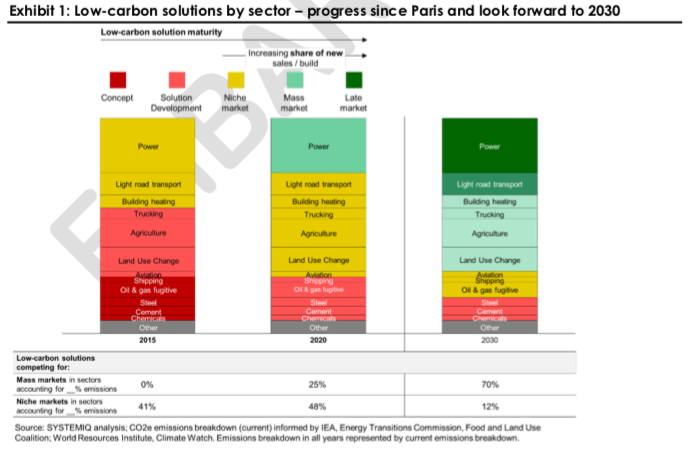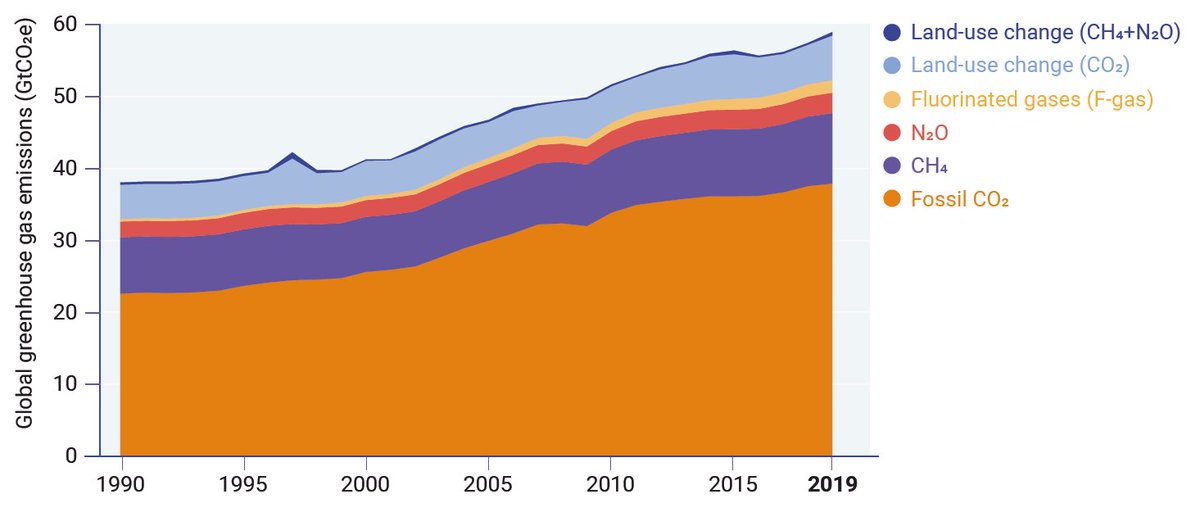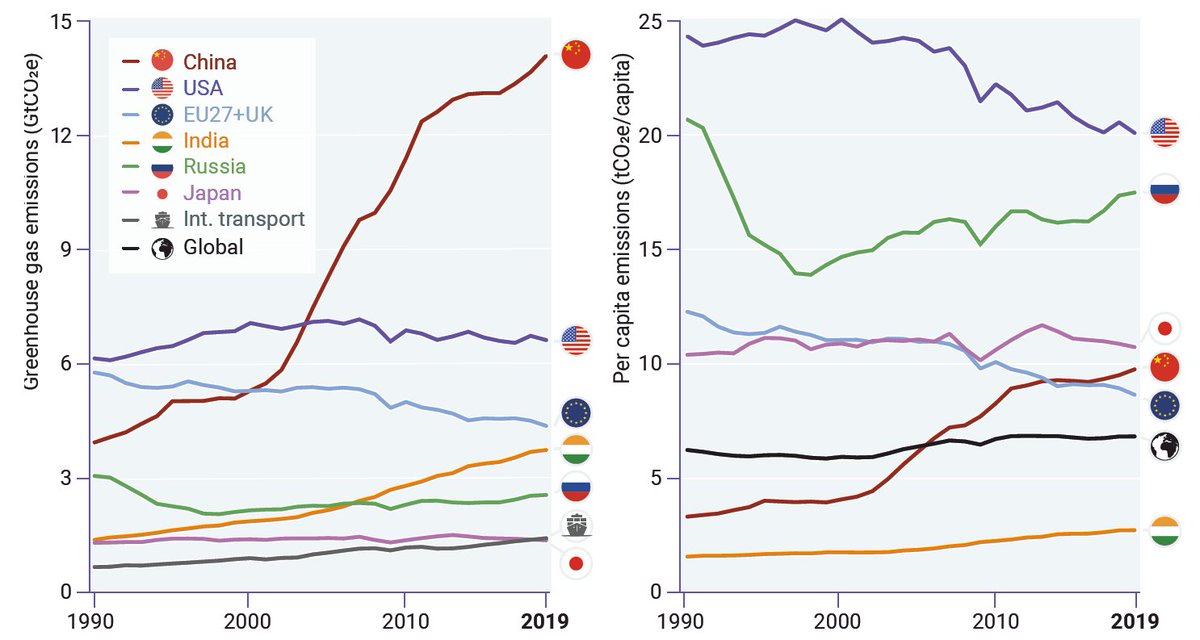Discover and read the best of Twitter Threads about #EmissionsGap
Most recents (19)
A 🧵of new reports before #COP27
🇪🇬 @UNFCCC #NDCs synthesis report
🌍 @UNEP #EmissionsGap report
⚠️@WMO Greenhouse Gas Bulletin
🪫@IEA World Energy Outlook
📋@ClimateActionTr #StateOfClimateAction
🌡️@IISD_Energy Navigating Energy Transitions
⚕️@LancetCountdown #LancetClimate22
🇪🇬 @UNFCCC #NDCs synthesis report
🌍 @UNEP #EmissionsGap report
⚠️@WMO Greenhouse Gas Bulletin
🪫@IEA World Energy Outlook
📋@ClimateActionTr #StateOfClimateAction
🌡️@IISD_Energy Navigating Energy Transitions
⚕️@LancetCountdown #LancetClimate22
2/9 🇪🇬@UNFCCC #NDCs synthesis report:
📈The combined climate pledges of 193 Parties under the #ParisAgreement could put the world on track for around 2.5°C of warming by 2030.
💥#LossAndDamage escalates with with every increment of global warming💥
🔗unfccc.int/news/climate-p…
📈The combined climate pledges of 193 Parties under the #ParisAgreement could put the world on track for around 2.5°C of warming by 2030.
💥#LossAndDamage escalates with with every increment of global warming💥
🔗unfccc.int/news/climate-p…
A 🧵on some of the big climate & energy reports that have just come out ahead of #COP27, before we have to abandon this ship..
➡️ @UNEP Emissions Gap Report
➡️ @IISD_Energy Navigating Energy Transitions
➡️ @IEA World Energy Outlook
➡️ @LancetCountdown on health & climate change
➡️ @UNEP Emissions Gap Report
➡️ @IISD_Energy Navigating Energy Transitions
➡️ @IEA World Energy Outlook
➡️ @LancetCountdown on health & climate change
Bear in mind that (1) Last month, a study from @sthlmresilience reinforced the message that every fraction of a degree counts. Five dangerous climate #TippingPoints may have already been passed due to the 1.1°C of global heating caused by humanity to date; theguardian.com/environment/20… 

... and (2) Atmospheric levels of three greenhouse gases -- CO2, methane, and N2O -- hit record highs in 2021. theguardian.com/environment/20…
The latest #EmissionsGap report is out, but don't forget the uncertainty on 2100 temperature estimates.
Current policies lead to a median warming (50%) across the median of post-2030 scenario assumptions of 2.6°C with a range of 1.7°C to 3.0°C.
unep.org/resources/emis…
🧵
Current policies lead to a median warming (50%) across the median of post-2030 scenario assumptions of 2.6°C with a range of 1.7°C to 3.0°C.
unep.org/resources/emis…
🧵
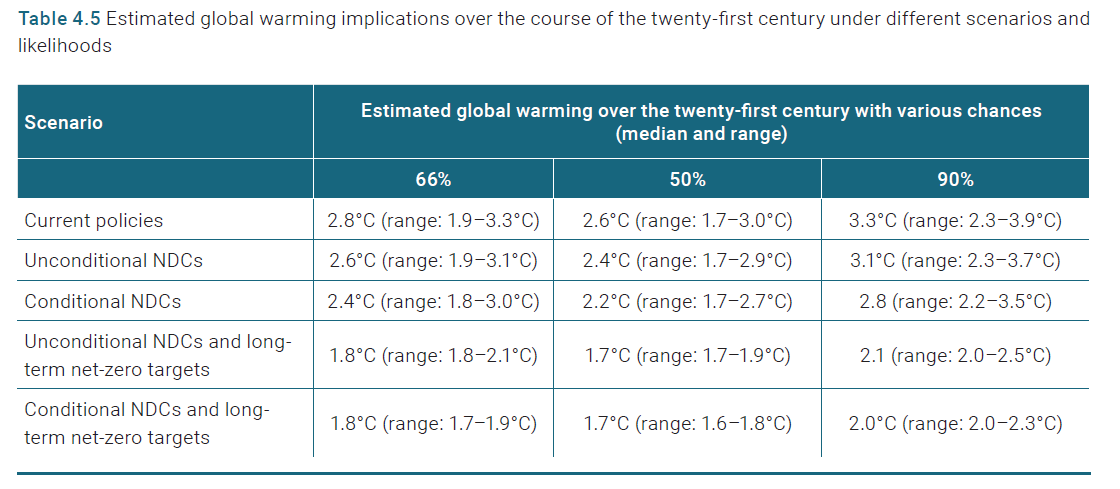
"This range reflects the uncertainty due to extrapolation of GHG emissions after the year 2030 and is given for the central estimate of 2030 emissions implied by current policies, NDCs and/or other pledges." (from EGR2021)
Geophysical uncertainties are on top of this!
2/
Geophysical uncertainties are on top of this!
2/
"Geophysical uncertainties in the climate response are reflected by the estimates for different warming percentiles (50 per cent, 66 per cent and 90 per cent)." (from EGR2021)
3/
3/
Where are global emissions heading and where should they be going to keep #globalwarming well below 2C and 1.5C?
Today, @UNEP released the 2022 #emissionsgap report.
A look at the key messages
but caution, not much good news ahead 🧵/1
Today, @UNEP released the 2022 #emissionsgap report.
A look at the key messages
but caution, not much good news ahead 🧵/1
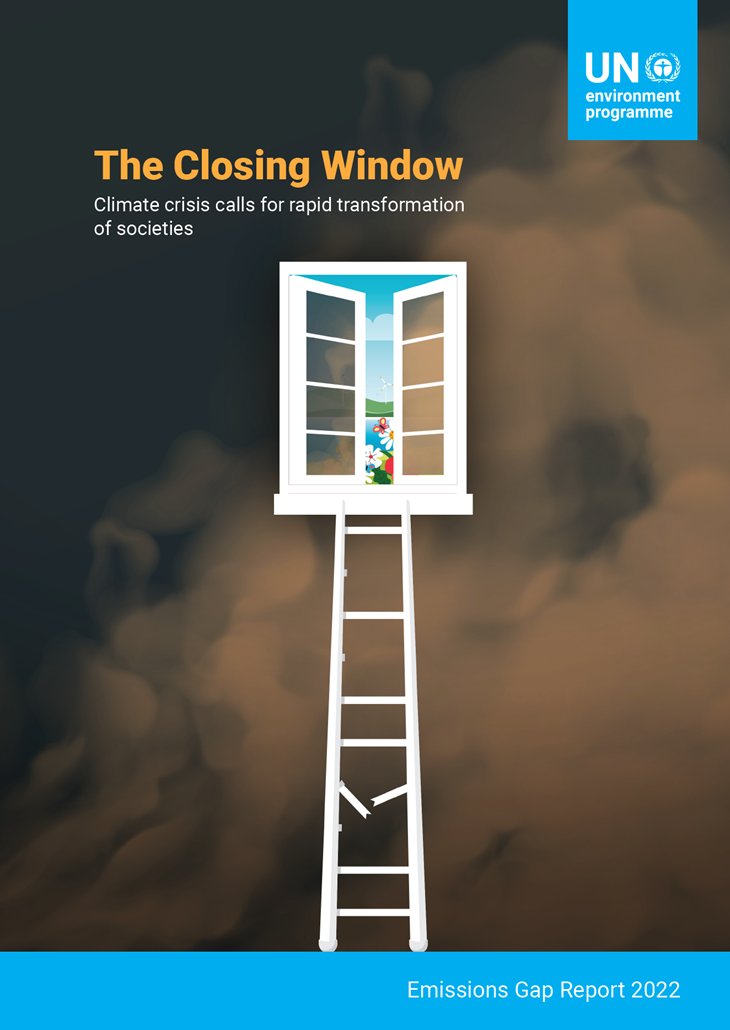
Countries’ new and updated pledges (NDCs) submitted since COP26 reduce projected global GHG emissions in 2030 by only 0.5 gigatons of CO2 equivalent (GtCO2e) compared with projections based on pledges at the time of COP26.
Some pledges result in even higher emissions /2
Some pledges result in even higher emissions /2

Countries are off track to achieve even the globally highly insufficient NDCs. Global GHG emissions in 2030 based on current policies are estimated at 58 GtCO2e. The implementation gap in 2030 between policies and NDCs is about 3 to 6 GtCO2e. /3
#Thread
#Carbonequation points to ltd #carbonbudget. There is also a #trustequation linked to past (in)actions. If trust equation is undermined, there'd be little hope 4 integrity of carbon equation. @climateactiontr’s analysis imp but incomplete. Read👇
#Carbonequation points to ltd #carbonbudget. There is also a #trustequation linked to past (in)actions. If trust equation is undermined, there'd be little hope 4 integrity of carbon equation. @climateactiontr’s analysis imp but incomplete. Read👇
Here are 6 reasons:
1. Let's start with the future.
Even with the latest pledges, by 2030, #China, the #US & the #EU would consume 45% of available carbon space for 1.5 °C.
2. By 2050, they will consume nearly 90% of the available carbon space.
2/n
1. Let's start with the future.
Even with the latest pledges, by 2030, #China, the #US & the #EU would consume 45% of available carbon space for 1.5 °C.
2. By 2050, they will consume nearly 90% of the available carbon space.
2/n
3. Shall we open the history books now?
In the pre-2020 #climateaction regime, developed countries collectively consumed a whopping 25 GtCO2eq additional carbon space - equivalent to almost 50% of annual global emissions.
3/n
In the pre-2020 #climateaction regime, developed countries collectively consumed a whopping 25 GtCO2eq additional carbon space - equivalent to almost 50% of annual global emissions.
3/n
New #COP26 analysis: 🚨🌡️🌍
Is COP26 on track to keep 1.5°C alive?
Here I connect the dots between findings of the most recent scientific reports and look at what current pledges mean for carbon budgets limiting warming to 1.5C
(1/n)
Is COP26 on track to keep 1.5°C alive?
Here I connect the dots between findings of the most recent scientific reports and look at what current pledges mean for carbon budgets limiting warming to 1.5C
(1/n)
I start with historical CO2 emissions from the Global Carbon Project @gcarbonproject as assessed in the latest @IPCC_CH #AR6 #ClimateReport
About 2400 billion tonnes of CO2 (GtCO2) have already been emitted between the years 1850 and the end of 2019 (2/n)
About 2400 billion tonnes of CO2 (GtCO2) have already been emitted between the years 1850 and the end of 2019 (2/n)

I then add global emissions pathways consistent with current policies, and various interpretations of country pledges (called NDCs, or nationally determined contributions) from the latest update of the @UNEP #EmissionsGap Report 2021. (3/n)
wedocs.unep.org/bitstream/hand…
wedocs.unep.org/bitstream/hand…
CAT global update: Glasgow has a credibility gap between talk and action. If all govts met their 2030 targets, we would have 2.4˚C of warming in 2100. But right now, current policies put us at 2.7˚C. bit.ly/CAT_Global2021
A Thread 🧵
A Thread 🧵
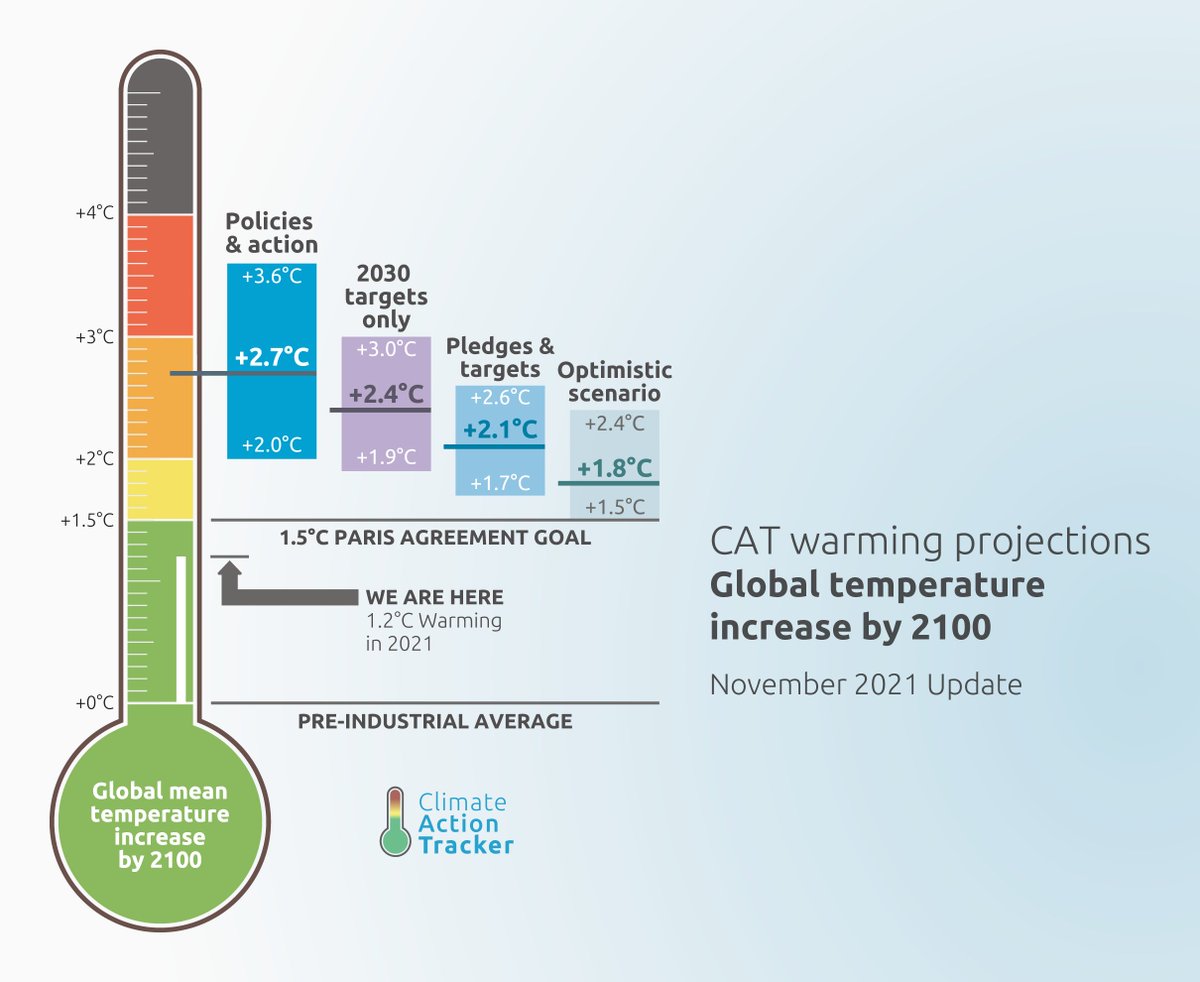
The 2030 #emissionsgap has only closed by 15-17% in the past year. Global GHG’s in 2030 will still be twice as high as what’s needed for 1.5˚C
#COP26Glasgow
/3
#COP26Glasgow
/3
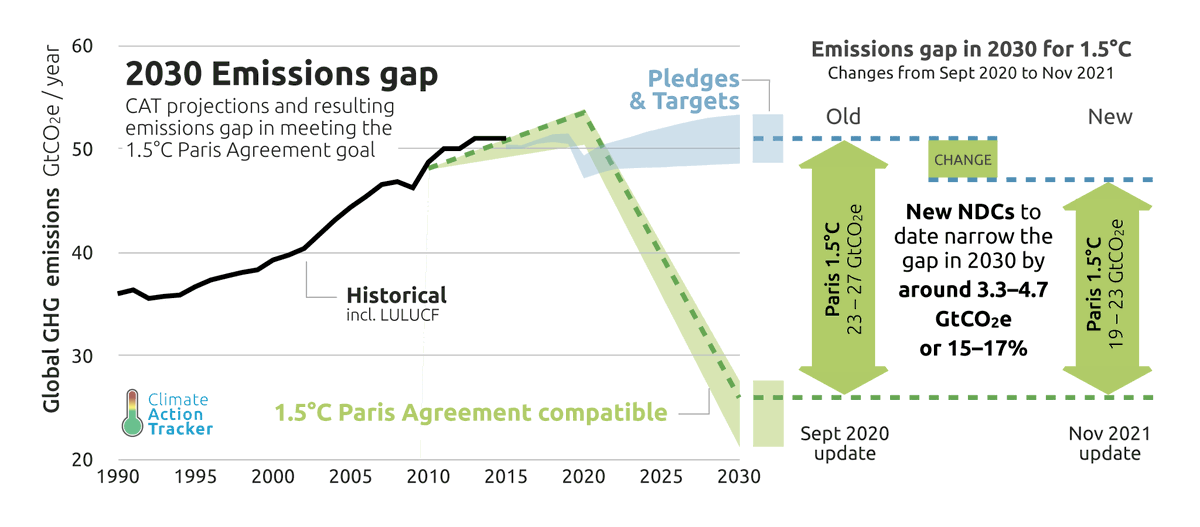
New paper today estimates the per capita emissions gaps for 1.5C of global income groups in 2030, based on NDCs
Richest 1% set for footprints 30x 1.5C-aligned global level
Richest 10% - 9x higher
Middle 40% - 2x higher
Poorest 50% - 2x lower
@IEEP_eu @Oxfam @SEIclimate #COP26
Richest 1% set for footprints 30x 1.5C-aligned global level
Richest 10% - 9x higher
Middle 40% - 2x higher
Poorest 50% - 2x lower
@IEEP_eu @Oxfam @SEIclimate #COP26

In absolute terms, the consumption emissions of the richest 10% in 2030 are set to nearly amount to the global total in 2030 compatible with 1.5C (18Gt)
The poorest 90% are set to only just exceed that level
This is the #inequality behind the #emissionsgap
The poorest 90% are set to only just exceed that level
This is the #inequality behind the #emissionsgap

We estimate the share of emissions of the richest 1% are set to grow further following the 2015 Paris Agreement - reaching 16% of total global emissions by 2030
#inequality #COP26 #COP26Glasgow
#inequality #COP26 #COP26Glasgow

Ahead of tomorrow's release of new @IEEP_eu @Oxfam @SEIclimate estimates of #carboninequality in 2030, based on the #NDCs...
...Here's a reminder of our work last year, as featured in the @UNEP #emissionsgap rpt 2020 🧵
#COP26 #COP26Glasgow
...Here's a reminder of our work last year, as featured in the @UNEP #emissionsgap rpt 2020 🧵
#COP26 #COP26Glasgow
Time for another edition of “This Week in Climate Pledges”! 🗓️🧵⤵️ 1/
MONDAY: @UNFCCC drops the latest update to the NDC Synthesis Report. Takeaway? Nothing has really changed since September 17 - we’re still on track for 2.7C (considering NDCs alone). unfccc.int/process-and-me… 2/ 

I imagine they’d hoped China’s NDC would arrive by then, but it didn’t come til later in the week - and then, only to affirm pledges announced last December. (Follow @LHongqiao and @LiShuo_GP for insights.) unfccc.int/documents/3076… 3/
The Heat is On🔥🌍
A world of climate promises not yet delivered
Today we’ve publish the @UNEP #EmissionsGap report
Good news:
we are doing increasingly better closing in on 2°C
Bad news:
it is still far from meeting the goals of the #ParisAgreement
A short thread (1/n)
A world of climate promises not yet delivered
Today we’ve publish the @UNEP #EmissionsGap report
Good news:
we are doing increasingly better closing in on 2°C
Bad news:
it is still far from meeting the goals of the #ParisAgreement
A short thread (1/n)

The @UNEP #emissionsgap report takes stock of current pledges of countries and compares them to where emissions emissions should be going to limit warming to 1.5°C or 2°C.
The difference is called the emissions gap.
(2/n)
The difference is called the emissions gap.
(2/n)
The latest @UNEP #EmissionsGap Report finds new and updated Nationally Determined Contributions only take 7.5% off predicted 2030 emissions compared to previous commitments. Reductions of 30% are needed to stay on the least-cost pathway for 2°C and 55% for 1.5°C. (3/n) 
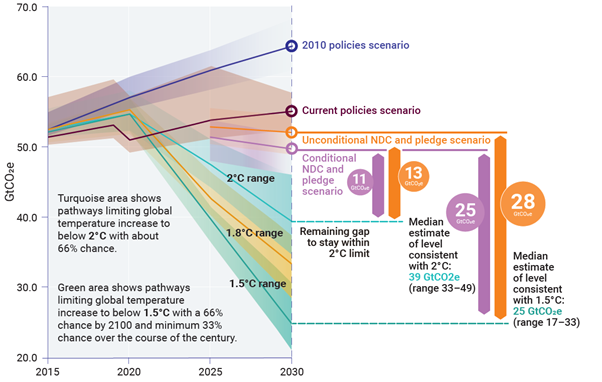
Il y a 5 ans exactement, je quittais le site de la COP21 au Bourget, à la fois fatiguée, soulagée de la signature de l'#AccordDeParis et inquiète pour l'avenir. Que s’est-il passé depuis ? [THREAD non exhaustif] #5AnsApres ⤵️ 
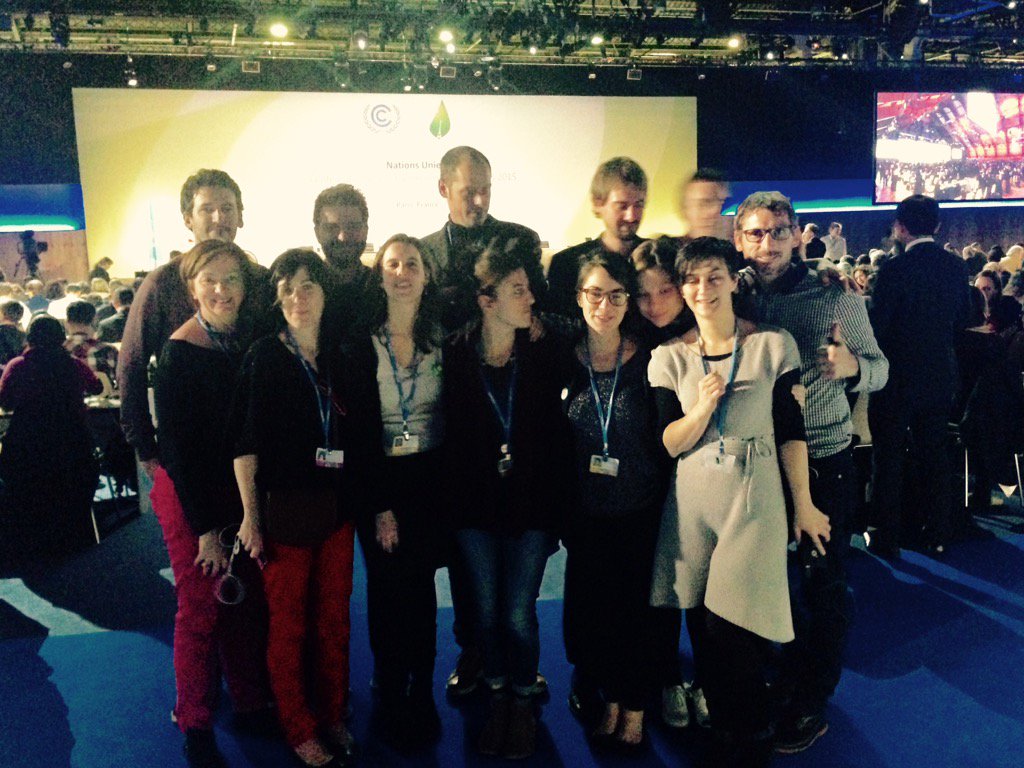
▶️ Le 12 décembre 2015, nous déclarions avec le @RACFrance que l'#AccordDeParis ne serait historique que si les Etats le mettaient en oeuvre. Tout restait à faire 👉macop21.fr/accord-de-pari… 

▶️ #5AnsApres, le monde a connu les mois et les années les plus chauds jamais enregistrés. Dernier exemple en date, en Europe, l’automne 2020 est 1,9 °C au-dessus de la période de référence
👉lemonde.fr/planete/articl…
👉lemonde.fr/planete/articl…
It's (nearly) five years since the Paris Agreement was gaveled through… but was it any good? Tricky question. Based on emissions, temperature data and impacts, no. *But...* (thread)
The team at @SystemIQ_LTD have crunched the numbers & reviewed how far + fast sectors have shifted since 2015. Their take is the global economy could be a decade away from seismic tipping points that see the world move fast towards low carbon.
THREAD: UNEP #EmissionsGap Report 2020
Although the COVID-19 pandemic will cause a dip in 2020 emissions, this will not bring the world closer to the Paris Agreement goal of limiting global warming this century to well below 2°C & pursuing 1.5°C.
1/
unenvironment.org/emissions-gap-…
Although the COVID-19 pandemic will cause a dip in 2020 emissions, this will not bring the world closer to the Paris Agreement goal of limiting global warming this century to well below 2°C & pursuing 1.5°C.
1/
unenvironment.org/emissions-gap-…

Is Australia on track to meet its emission pledges?
Overview: Without Land Use, Land-Use Change, Forestry (LULUCF), Australian GHG emissions are clearly rising...
1/
Overview: Without Land Use, Land-Use Change, Forestry (LULUCF), Australian GHG emissions are clearly rising...
1/

In addition to friendly LULUCF rules, Australia has relative soft targets:
* Kyoto 1: 1900 to 2008/2012, pledged 8% increase
* Kyoto 2: 1990 to 2013/2020, pledged 0.5% reduction
Australia can only achieve the 2020 target, by relying on over achievement of the 2012 target!
2/
* Kyoto 1: 1900 to 2008/2012, pledged 8% increase
* Kyoto 2: 1990 to 2013/2020, pledged 0.5% reduction
Australia can only achieve the 2020 target, by relying on over achievement of the 2012 target!
2/
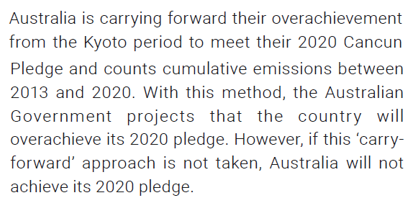
Australia is expected to exceed its 2030 target (NDC, Paris pledge) by more than 15% without additional policies, according to scientific studies.
From @UNEP #EmissionsGap report
3/
From @UNEP #EmissionsGap report
3/

"#Degrowth am Prüfstand"
@leopoldStefan hat sich für @derStandardat mit Degrowth auseinandergesetzt und betitelt das mit: "Reiche Länder wachsen und belasten die Umwelt weniger – wo ist der Haken?"
Es gibt viele Haken. Thread.
derstandard.at/story/20001115…
@leopoldStefan hat sich für @derStandardat mit Degrowth auseinandergesetzt und betitelt das mit: "Reiche Länder wachsen und belasten die Umwelt weniger – wo ist der Haken?"
Es gibt viele Haken. Thread.
derstandard.at/story/20001115…
Das Wichtigste zuerst: Die Weltwirtschaft und mit ihr fast alle Indikatoren für Uwmeltzerstörung wachsen weiter. Daran ändern auch kleinere Fortschritte in einigen Ländern nichts.
Gerade erst ist z.B. der alarmierende #EmissionsGap Report erschienen:
derstandard.at/story/20001115…
Gerade erst ist z.B. der alarmierende #EmissionsGap Report erschienen:
derstandard.at/story/20001115…
"Die Emissionen, die auf westlichen Konsum zurückgehen, egal wo die Waren herkommen, sind in den vergangenen zehn Jahren ebenfalls gesunken"
Die liebe Entkopplung. Leider ist sie nicht ausreichend, passiert nicht schnell genug und bringt andere Probleme:
eeb.org/decoupling-deb…
Die liebe Entkopplung. Leider ist sie nicht ausreichend, passiert nicht schnell genug und bringt andere Probleme:
eeb.org/decoupling-deb…
4 years after Paris COP21 it might seem surprising that countries plan for more fossil fuel extraction, not less
productiongap.org
But this could also be seen as prime example for deliberate inconsistency (& hypocrisy) in #climate policymaking onlinelibrary.wiley.com/doi/abs/10.100… #COP25
productiongap.org
But this could also be seen as prime example for deliberate inconsistency (& hypocrisy) in #climate policymaking onlinelibrary.wiley.com/doi/abs/10.100… #COP25

now the annual UNEP Emissions Gap Report is out, not only showing that global greenhouse gas emissions are rising continuously...
unenvironment.org/resources/emis…
unenvironment.org/resources/emis…

...but also showing (once again) the huge gap between national emissions reduction pledges and what 2030 levels might be needed to keep certain end-of-century temperatures below certain thresholds (according to current methodologies)
unenvironment.org/resources/emis…
unenvironment.org/resources/emis…

A new "Production Gap" report, showing the #EmissionsGap in terms of the production of coal, oil, & gas.
Not surprisingly, the world is planning to dig up more fossil fuels (Production Gap) & burn them (Emission Gap) than is necessary for 1.5°C & 2°C
1/
productiongap.org
Not surprisingly, the world is planning to dig up more fossil fuels (Production Gap) & burn them (Emission Gap) than is necessary for 1.5°C & 2°C
1/
productiongap.org
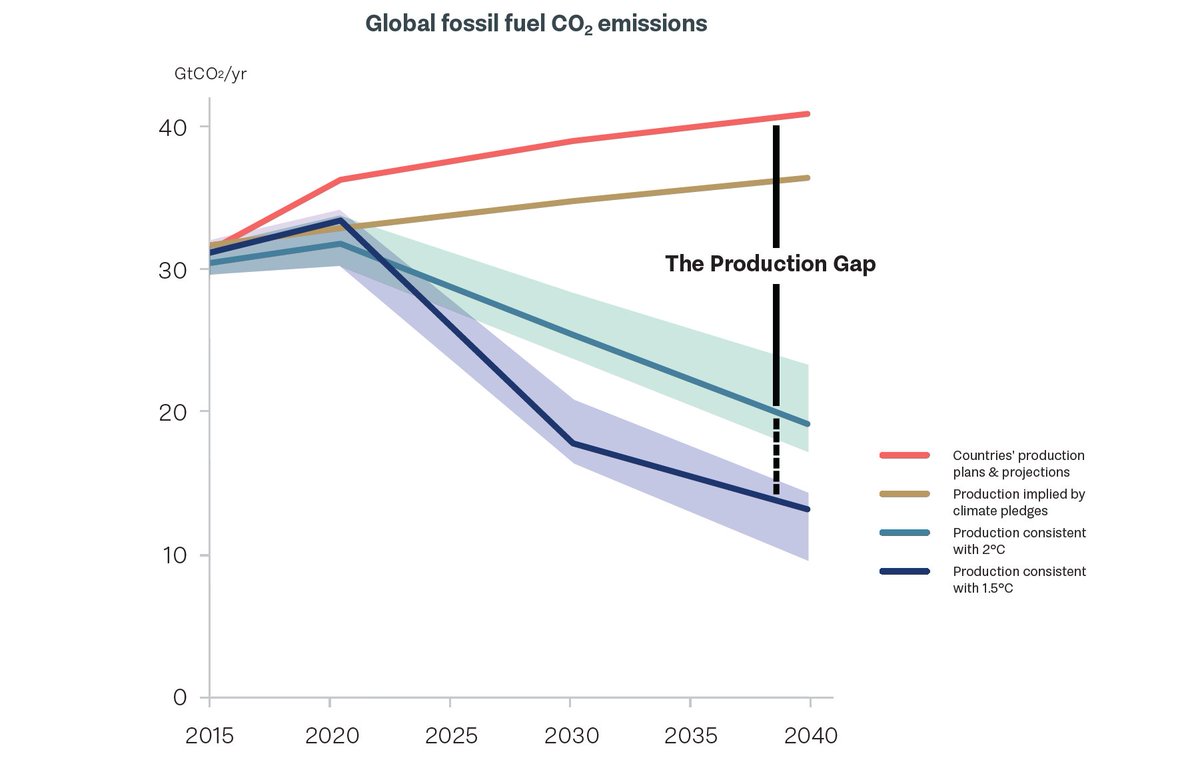
The production gap is largest in coal, which has big implications. Emission scenarios basically find it is most cost-effective to get coal out of the system really fast. While this makes sense, it also has big equity dimensions. Who uses that coal?
2/
2/

It is China, India, & many developing countries that use the coal. The developed world is getting rid of coal.
Basically, to close the production gap, is going to require a large burden on China & India.
Earlier blog on this issue cicero.oslo.no/no/posts/cicer…
3/
Basically, to close the production gap, is going to require a large burden on China & India.
Earlier blog on this issue cicero.oslo.no/no/posts/cicer…
3/

1. Remember that #EmissionsGap, where 2°C pathways required 41-47GtCO₂-eq in 2020 & emission policies would lead to an Emissions Gap of 8-13GtCO₂?
Now GHG emissions are ~55GtCO₂ (2019). What happened to the gap from 2012?
unenvironment.org/resources/emis…
Now GHG emissions are ~55GtCO₂ (2019). What happened to the gap from 2012?
unenvironment.org/resources/emis…
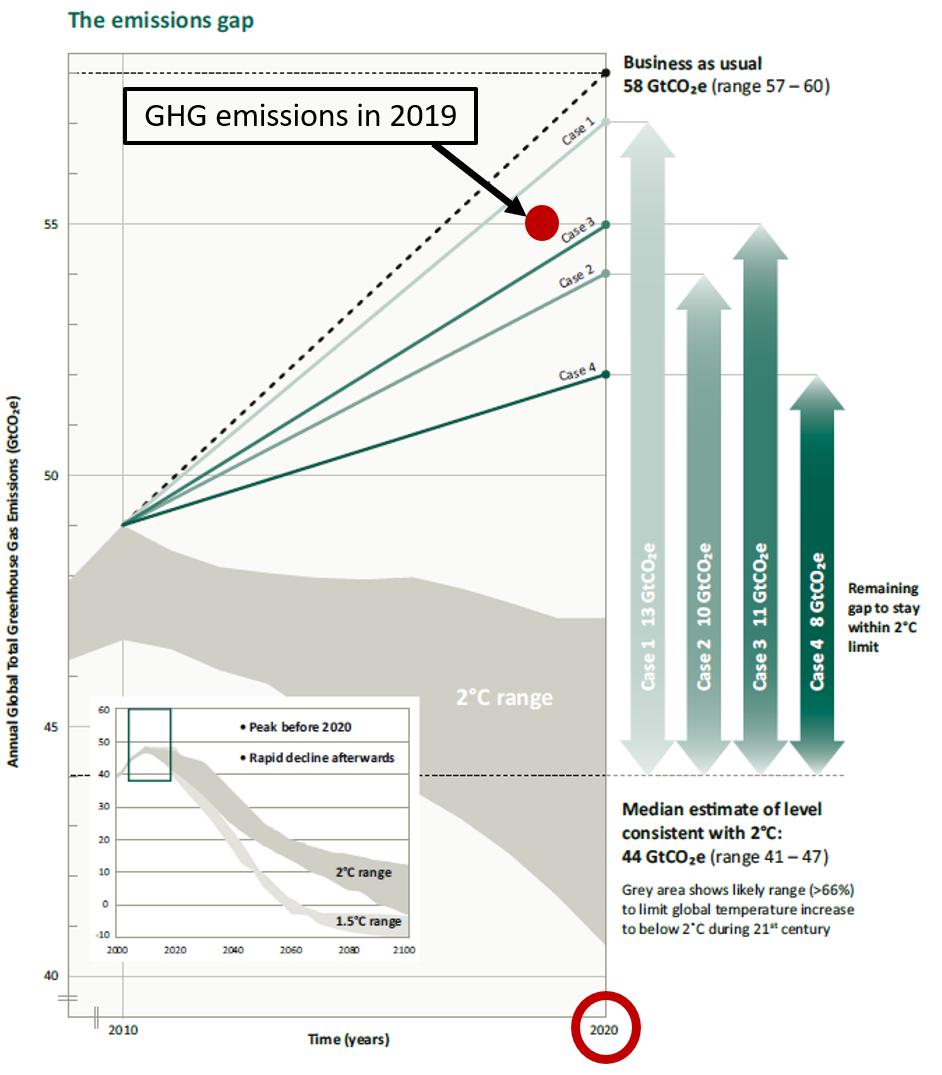
2. Current emissions are now "on-track" for 1.5°C & 2°C in 2020 (no gap), but the gap now lies in 2030...
Is 2°C harder? Or have model developments & CO₂ removal made it "easier"?
And how to communicate a lost decade of mitigation?
unenvironment.org/resources/emis…
Is 2°C harder? Or have model developments & CO₂ removal made it "easier"?
And how to communicate a lost decade of mitigation?
unenvironment.org/resources/emis…
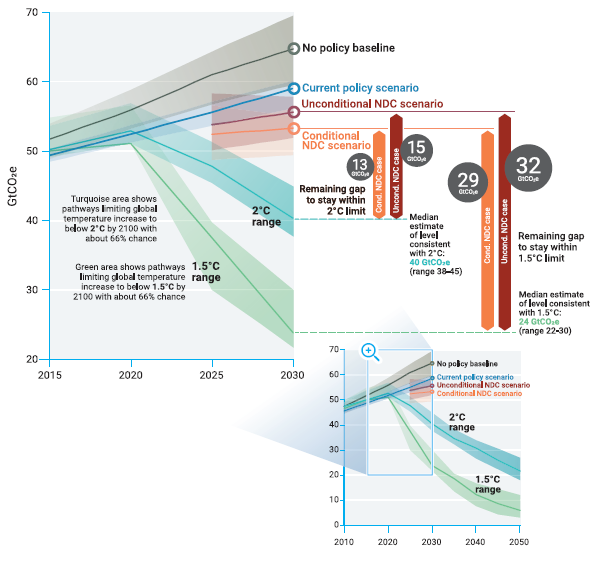
3. Oliver Geden brought this point up a few years ago: "...it will always be ‘five minutes to midnight’, although global emissions are still not decreasing" @Oliver_Geden
nature.com/articles/s4156…
nature.com/articles/s4156…



